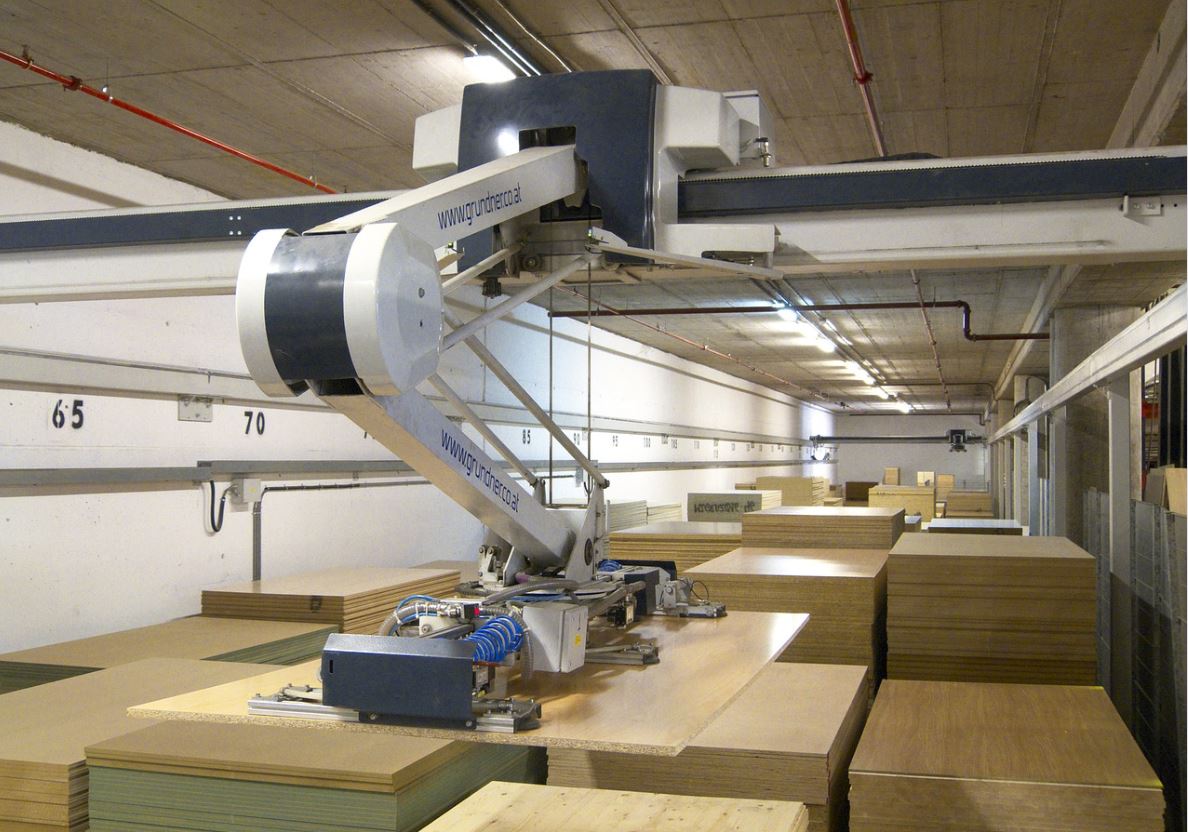The industrial world doesn’t talk about robotics in the future tense anymore. Robots are happening right now. Every industry that makes heavy use of human labor, including warehousing, has the opportunity to reach new levels of productivity and safety using machinery.
Warehouses are prime candidates for robotic disruption — or should we call it robotic opportunity? Here are four types of robots already proving instrumental in warehouses everywhere.
1. Automated Guided Vehicles
Automated guided vehicles (AGVs) have inherited an impressive amount of the labor previously performed using hand carts, pallet trucks and forklifts.
The most common use for AGVs is to bring products, tools or materials from one part of a warehouse to another. At their simplest, these robots are little more than heavy-duty platforms equipped with wheels and guidance systems. The heavier the merchandise, and the more frequently it needs to be moved, the more a warehouse benefits from adding AGVs to its fleet.
This type of automated vehicle can find its way around in multiple ways. Some warehouses place magnetic strips on the floor to guide AGVs on predetermined routes. In other environments, the robot might require infrared cameras and LiDAR to provide pathfinding and an awareness of moving objects and people in the vicinity.
2. Robotic Articulated Arms
Warehouses have found several ways to put articulated arms to work. They feature multiple joints that provide flexion and rotation, along with a gripping hand.
Many robotic arms are designed to be modular, meaning the gripping implement can be replaced with different digits or suction cups. Grip strength may be determined using sensors or preprogrammed for a specific task. In warehouses, robotic arms typically provide the following functionality:
- Gantry-mounted “cartesian” arms may be placed above or alongside conveyor belts to move heavy products between workstations or assembly or staging areas.
- Cylindrical robotic arms are typically used to hold workpieces or tools in place so employees can perform work on the item. This may include prepping and packaging heavy equipment or vehicle parts.
- Pick-and-place robots are free-moving automatons that use arms and gripping hands to transport product to or from storage areas and place it in the correct bin.
3. Automated Storage and Retrieval Systems
AS/RS systems take different forms depending on the warehouse layout and the nature of the work. These include cranes, which navigate aisles and racking from above, or shuttle-type systems, which use a fixed track on the floor to find its way.
In both cases, warehouses use AS/RS systems to turn inventory management into an automatic process. After receiving instructions from a warehouse management system, the robot navigates to the correct bin or shelving location, picks the product, and then brings it to where it’s needed. These come in handy for several reasons.
“Goods-to-person” AS/RS systems make it simple to buffer works-in-progress so there’s no lull in productivity. The next workpiece is already present, or on its way, by the time the employee finishes their current task. No foot traffic is required. This type of robot is also useful for automatic inventory replenishment, making for fully stocked warehouse racking at all times.
Some preparation may be involved before a warehouse adopts an AS/RS system. For instance, there are many advantages for operations that standardize tote and bin designs. One of these is the ability to create safe and repeatable workflows for these and other types of material-handling robots. Having standard tote designs for machines to transport removes a critical variable during robotic design and programming, versus picking up differently shaped objects each time.
4. Robotic Inspection Stations and Cobots
There are lots of sources of potential error in warehouses. These include picking similar SKUs from nearby racking, shipping damaged goods or selecting an improperly stowed item from the correct bin. Now, with several different types of robotic inspection systems, warehouses can move ever closer to zero-defect operations.
This branch of robotics comes in two varieties: stationary robotic inspection stations and mobile cobots. Inspection stations receive outgoing products on a conveyor belt, while cobots may be moved from workstation to workstation to inspect products as they’re assembled or prepped for shipping.
Both variations employ machine vision. This technology combines high-fidelity cameras with machine learning to read barcodes or compare the product against known inventory parameters for pick accuracy. The most advanced systems use near-infrared spectroscopy to inspect delicate items, such as fruits and other foodstuffs.
Why Turn to Robots in Warehouses?
There are lots of other robotic designs worth exploring in warehouses. As an example, aerial drones could be a common sight in a few years. They’ll end up serving a similar purpose as AGVs and AS/RS systems, except they’ll free up even more floor space and pose less of a traffic hazard.
Warehouse managers find themselves turning to robotics for several compelling reasons. One of these is the tight labor market throughout the world. The BLS is reporting record-low unemployment of 3.6% in the United States, concurrent with constant growth in the e-commerce sector. More employers find themselves scrambling to meet customer and labor demands.
We won’t automate every warehouse overnight, but there are clear advantages to engaging in selective automation in the riskiest, most expensive and most error-prone processes. The robot designs described above will go a long way toward keeping the bottom line — as well as employees — healthy and happy.

